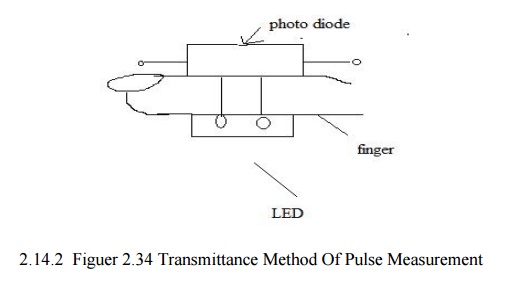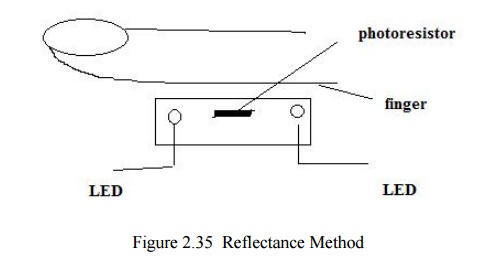Chapter: Medical Electronics : Bio-Chemical and Non Electrical Parameter Measurement
Pulse Measurement
PULSE MEASUREMENT
When
heart muscle contracts , blood is ejected from the ventricles and a pulse of
pressure is transmitted through the circulatory system. This pulse can be
measured at various points. We can sense the pulse by placing our finger tip
over the radial artery in the wrist. This pulse travels at the speed of 5 to
15m per second. Photoelectric method is commonly employed to measure the pulse.
Types:
Photoelectric
method consists of two types
·
Tramsmittance method
·
Reflectance method
1. TRANSMITTANCE METHOD OF PULSE MEASUREMENT
LED and
photoresistor are used in this method. These are mounted in a enclosure that
fits over the tip of the finger. Light is produced by the LED. The same light
is passed through the finger. For each heart pulse , blood is forced to the
extremities and the amount of blood in the finger is increased. So optical
density is changed. So, the light transmitted through the finger is decreased.
This light is received by the photo resistor. This photo resistor is connecte
with the part of voltage divider circuit. The voltage produced by this circuit
is directly proportional to the amount of blood flow in the figure. The output
ius recorded by using strip chart recorder.

2. REFLECTANCE METHOD
N
reflectance method, LED is placed adjacent to the photoresistor. LED emits the
light. This light is reflected form the skin and the tissues falls on the photo
resistor. The reflected light varies depending upon the blood flow in the
finger. The photo resistor is connected as a part of the voltage divider
circuit. The output obtained is directly proportional to the amount of blood in
the finger. The output can be recorder using strip chart recorder.

Related Topics